Single coils vs humbuckers: Which pickup type is right for you?
They both offer a unique flavor of guitar tone, but is one pickup really better than the other? We deep dive into the debate
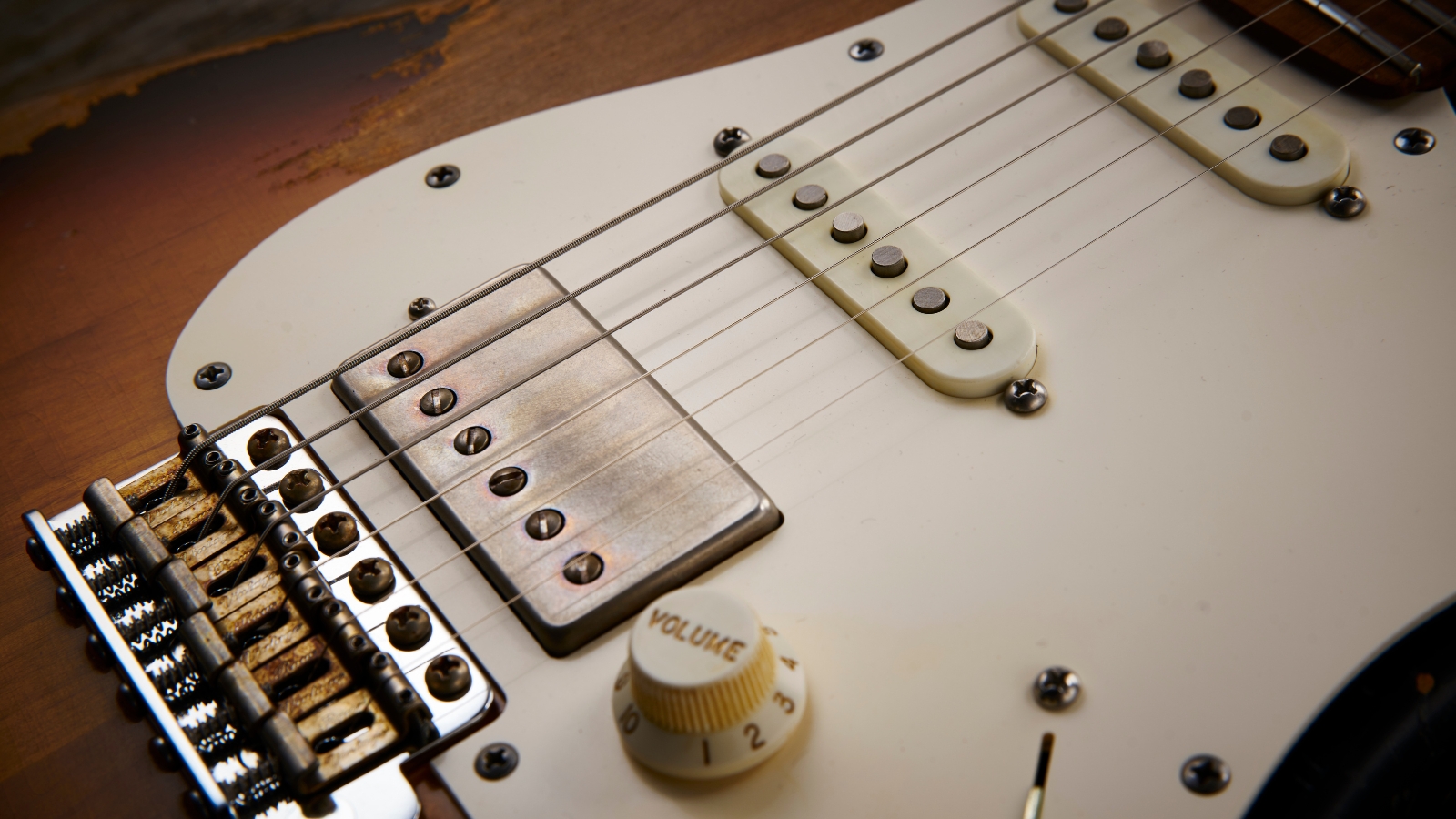
Many guitarists have debated the pros and cons of single coils vs humbuckers. Traditional Strat players will rhapsodize about their single coil clarity and bite, whilst the LP lovers wax lyrical over their humbucker's pure power and sustain. Somewhere in the middle, HSS owners are probably shrugging their shoulders. So does the type of pickup you use define you as a player? And is one really better than the other?
Arguably the most crucial element of your instrument, there's no doubt that your pickup choice defines the sound of your guitar – more so than body wood, hardware, neck profile, or any other specification. Pickups are the funnel through which your playing technique is translated to your amplifier and no other part of your guitar - other than yourself - has such a large impact on the way your playing actually sounds.
You could play the same lick through a single coil and a humbucker and each would add its own flavor to it. Your amplifier would react differently to the sonic characteristics of each, and even that nasty-sounding fuzz pedal would take on a totally different tonal quality. So what separates these two most popular pickup types? And which should you choose for your own instrument? Read on to find out.
Single coils vs humbuckers: The history
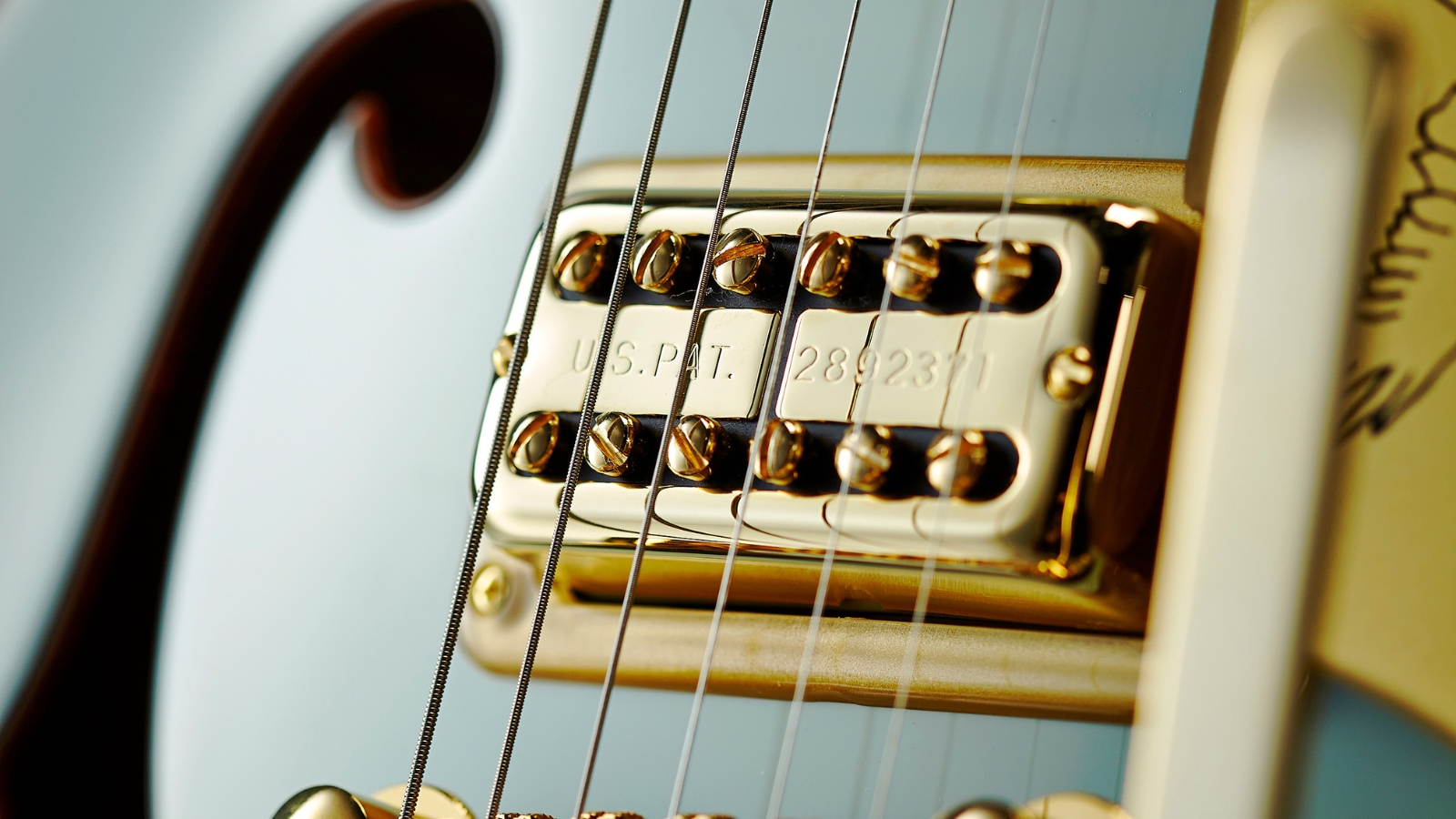
The single coil pickup is the one that started it all. Way back in the 1920s, the first true electric guitar pickup was developed by George Beauchamp and Adolph Rickenbacker, named the ‘horseshoe’ for its shape which wrapped all the way around the strings. It came in the form of the first commercially manufactured guitar, the famous ‘frying pan’. This configuration was then applied to the hollow-body guitars of the time, helping amplify the volume for use in big-band applications.
One issue with the ‘horseshoe’ was that it was prone to feedback, meaning it was difficult for players to get the volume they needed and stay in control of the noise. Thus it was shortly followed up by the ‘bar’ pickup from Gibson in the 1930s, which set the standard for magnetic pickups as we know them today with its bar magnet and pole piece construction. Made famous by jazz guitarist Charlie Christian, the ‘bar’ pickup appeared on the ES-150 which caused the popularity of the electric guitar to soar, leading to the development of Gibson’s P-90 and then Fender’s now-famous single-coil.
A Rickenbacker invention, they put the design aside because they weren’t fans of the distorted sound it created
The humbucker pickup came around much later. Once again a Rickenbacker invention, they put the design aside because they weren’t fans of the distorted sound it created. Little did they know players would soon come to crave that very same sound that pushed a tube amp into overdrive. A few years later, pretty much simultaneously, both Seth Lover of Gibson and Ray Butts came up with the PAF and Filter’Tron respectively. In an incredible instance of coincidence, the patents for each were issued within weeks of each other, giving the world two now iconic humbucking pickups.
It was the PAF that took all the glory though, as Gibson added them to their best-selling Gibson Les Paul, resulting in the humbucker becoming largely associated with Gibson guitars. Players loved its mid-range roar, excellent sustain, and distinct lack of 60-cycle hum and since then, pretty much every major guitar brand has had some form of the humbucker in one of its guitars.
Get The Pick Newsletter
All the latest guitar news, interviews, lessons, reviews, deals and more, direct to your inbox!
Single coils vs humbuckers: How they're made
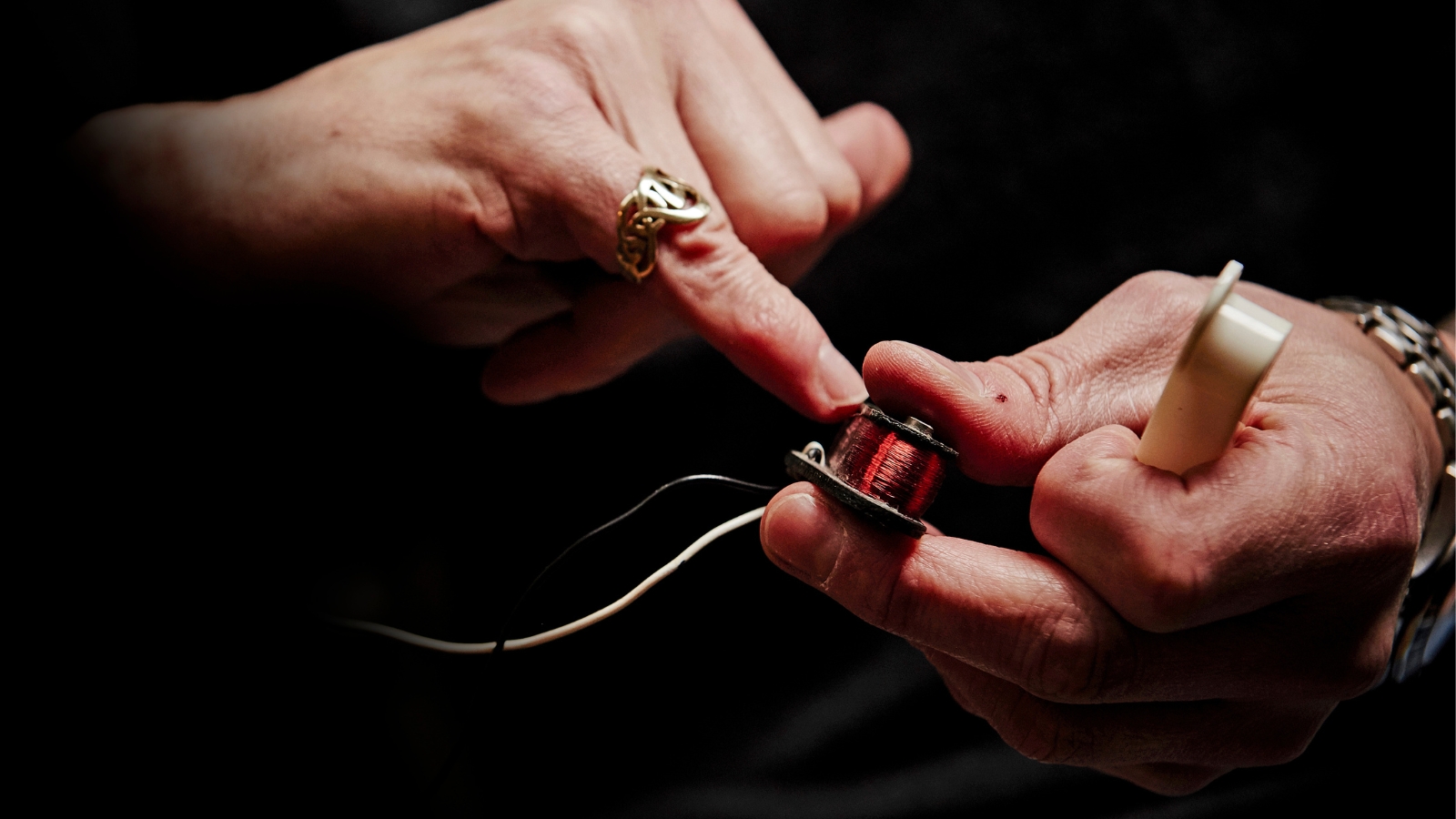
The modern pickup consists of three main components. First up is the bobbin (aka as a ‘flat’), then the pole pieces, and lastly the magnetic wire wraps. The pole pieces are mounted into the bobbins and then wrapped in copper wire to create an electromagnet. The whole thing is then usually encased in a plastic cover to prevent any damage to the fragile wire. There’s not too much variance from this design other than the material used for the pole pieces, the amount of wire, and the method by which it is wrapped.
Alnico magnets are the most common for pole pieces, offering a warmer and more musical tone thanks to their lower output. You can also get ceramic pole pieces, which are perceived as harsher due to their higher output level. Ceramic pickups have recently found favor with players of more extreme styles thanks to their cutting, treble-heavy tone working well with high gain.
The magnetic wire that’s wrapped around the pole pieces completes the electromagnet. The wire is ultra-thin and hair-like, which allows for thousands of wraps, and most pickups contain somewhere between 6000 to 8000 ‘turns’, with some going even higher than that. Typically more wraps results in higher output as it creates a stronger magnetic field.
There are the two coils to contend with, but the secret sauce is the way in which they are wrapped and wired together
Humbuckers are made in a very similar way, but with a few crucial differences. Of course, there are the two coils to contend with, but the secret sauce is the way in which they are wrapped and wired together. To create their hum-canceling effect the two individual coils must be placed in opposing directions, that is the ‘north’ of one coil facing the strings whilst the ‘south’ of the second coil does the same, and then wired out of phase with one another.
The phase cancellation caused by this arrangement is similar to the way a balanced audio cable works and was considered a huge technological improvement over the design of single coils, which act as a natural RF antenna and can pick up noise from electrical appliances and older-style CRT monitors. With a humbucker, that noise was all but eliminated, and although it’s considered an improvement from a pure design perspective, it hugely changes the sound of the pickup itself, leading us nicely to our next point.
Single coils vs humbuckers: The sound
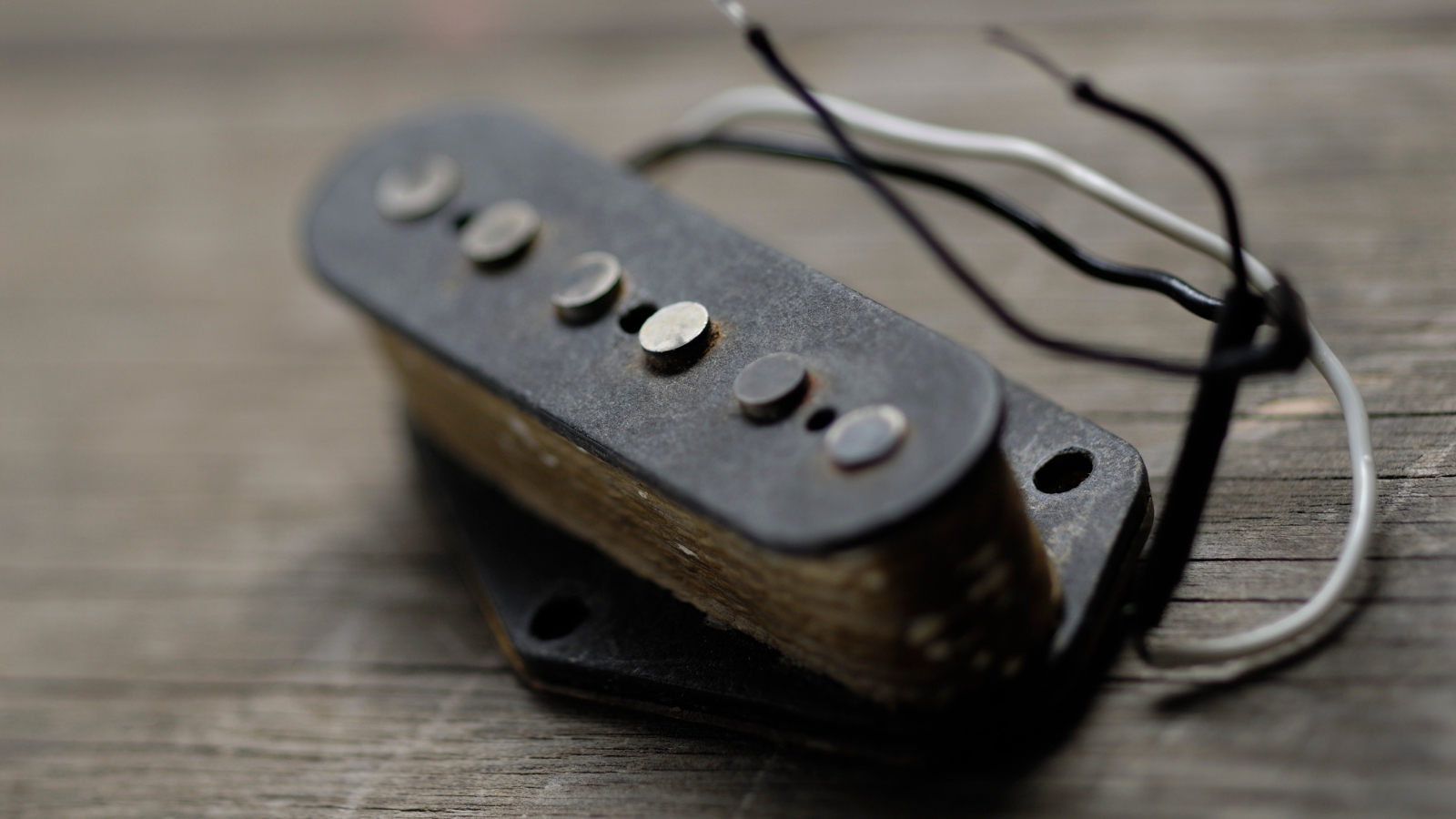
Now that we know the physical and historical differences between these two pickup types, let's have a look at the sonic variances. Single coil pickups are much-loved for their twangy, bright, and cutting tones. Clarity is the name of the game when it comes to the single coil, and players love them for how they accurately translate everything you do with your hands. It’s often said that single coils have a ‘bell-like’ quality to them, with a sweet and chime-y clean tone.
Single coils react really well to your playing dynamics, which is why you’ll find them utilized in expressive playing by many of the blues greats. Of course, they’re not just for blues, they also react really well to the use of effects, providing clarity even when you’ve got a bunch of distortion, delay, and modulation pedals running into your amp. This is where we come to the major drawback of the use of single coils.
Single coils are prone to feedback, inherent due to their design. Thanks to the exposed pole pieces, they will pick up interference from electrical devices around you, as well as shriek and squeal when your volume or gain is high. Some guitarists use this to their advantage, creating controlled wails of feedback, for others, this can be a very undesirable trait, especially annoying at a gigging volume or in a setup where you don’t need the guitar to be the star of the show.
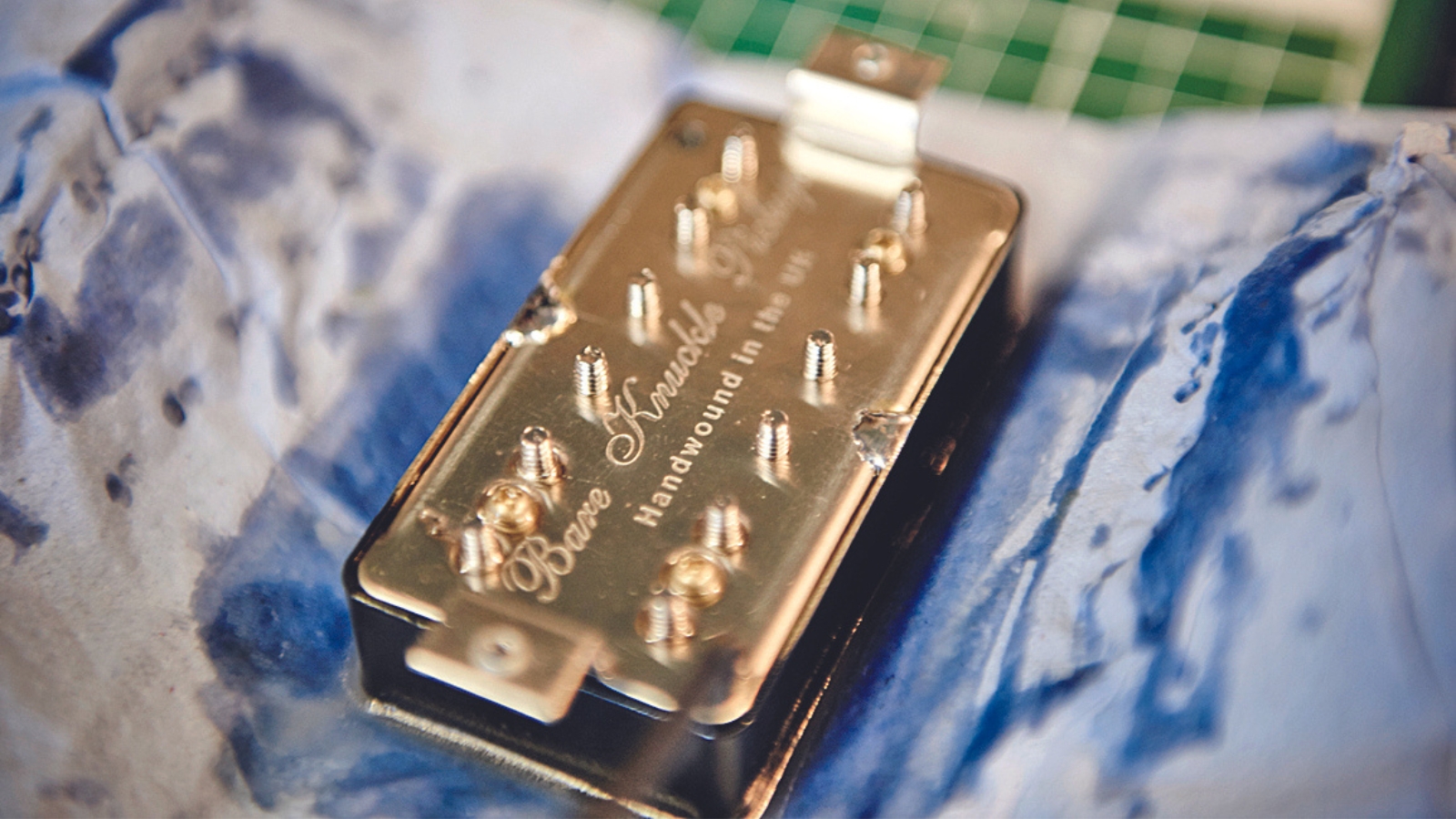
Humbuckers on the other hand offer a very different tonal palette. Due to the fact that they’re two single coils put together, a humbucker will be higher output than a single coil. This design means that they’re less prone to feedback or any annoying 60-cycle hum, hence the name 'hum bucker'. If you’re playing at high volume or with a lot of gain, humbuckers will make any extraneous noise a lot easier to control.
Players love humbuckers for their warm and full sound which contrasts with the sharp tone of a single coil. They emphasize the midrange, sounding very round and full. This also makes them very dynamic tonally, working just as well in jazz cleans as they do in high-gain metal. Humbuckers give you bags of sustain thanks to their higher output which makes them very adept at searing lead work and chunky chords that ring out for a long time. It gives you more play with the volume knob too, as you have a higher working range.
The downside of a humbucker is that they tend to sound a bit more muffled compared to a single-coil. You still get articulation from your notes, but there’s a fair difference in clarity when directly compared to a single coil. A humbucker just won’t bite in the same way that a single coil does and although you can get a humbucker to coil split and use just one side, it never ends up sounding quite as sweet as a true single coil.
Single coil vs humbucker: Which is best for me?
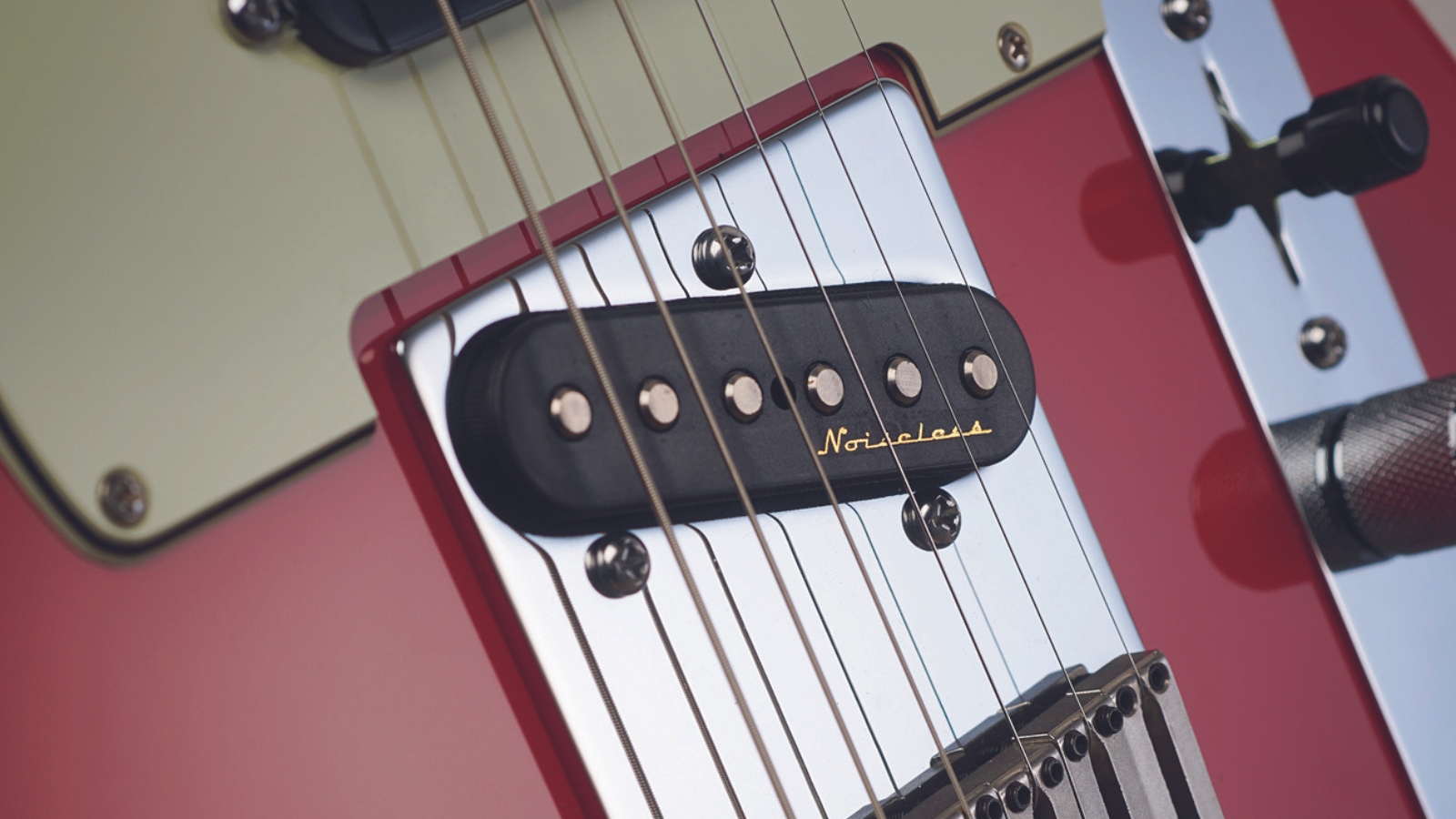
Now we come down to the big question, which should you go for? Well, this could be an article in itself if we were to outline all the different guitarists, playing techniques, and instruments that utilize either single coil or humbucker pickups. But what it really comes down to is your personal preference and your particular playing style.
You don’t have to have one or the other either. Many guitars come with HSS or HSH configurations, giving you the best of both worlds. Fender’s Noiseless single coil delivers bite and clarity minus the 60-cycle hum. Many humbuckers can be coil split for a spanky guitar tone and extra switching options. The list goes on.
At the end of the day, it comes down to what’s best for your music. Are you exclusively playing deathcore? Then you’ll probably want a humbucker. More into blues or funk? Go for a single coil. Like to straddle different genres? Get a guitar with both. Neither one is better than the other, they’re just different, and you’ll get a lot of joy from a guitar with either.
Even if you decide you want to stick with the current pickup type you already have, you can get a lot out of upgrading to a higher-quality set of pickups. Particularly with beginner and intermediate instruments, a pickup upgrade can take your instrument to the next level, leaving it able to compete with the higher quality of US and Japanese-made instruments.
Humbucker recommendations
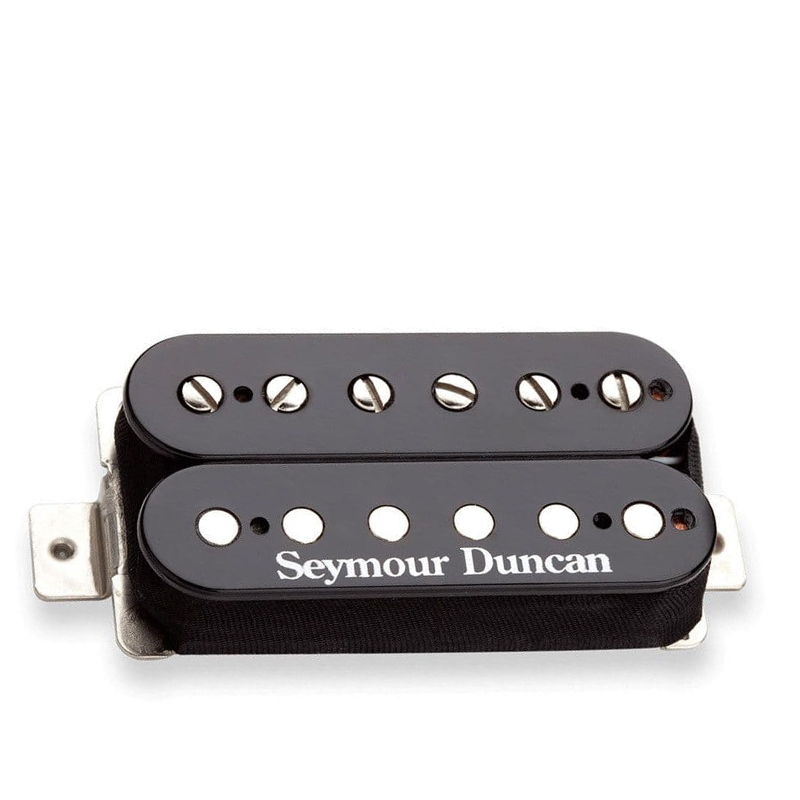
The Seymour Duncan JB is one of the most popular pickups ever and tops our list as the best humbucker currently available on the market. Affordable, easy to install, and fantastic sounding, this is a stellar pickup.
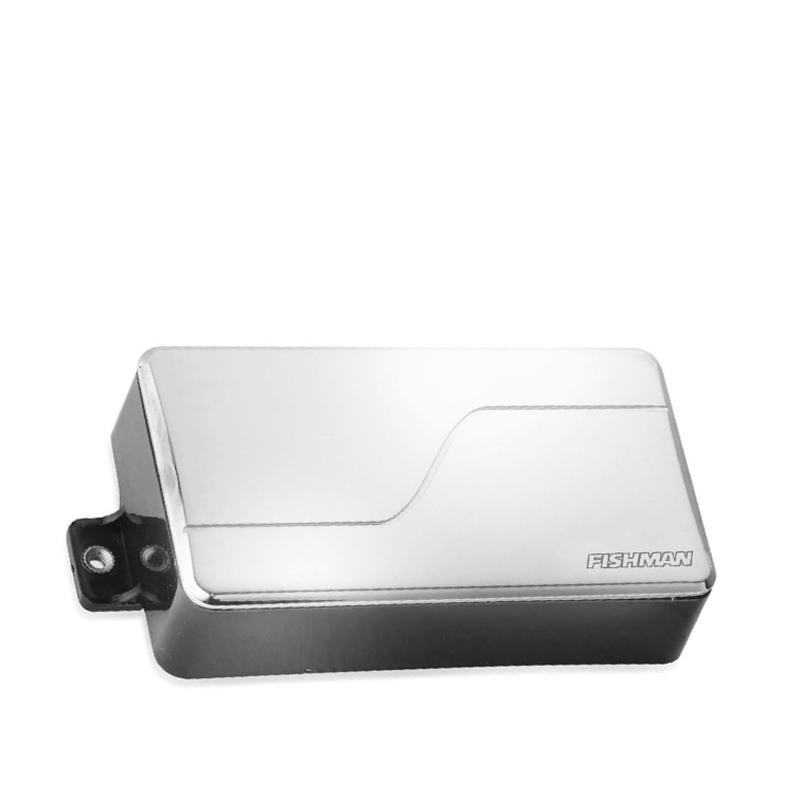
The Fishman Fluences are amongst the most innovative electric guitar pickups we’ve seen in recent years. These active multi-voice humbuckers are noise-free and super versatile.
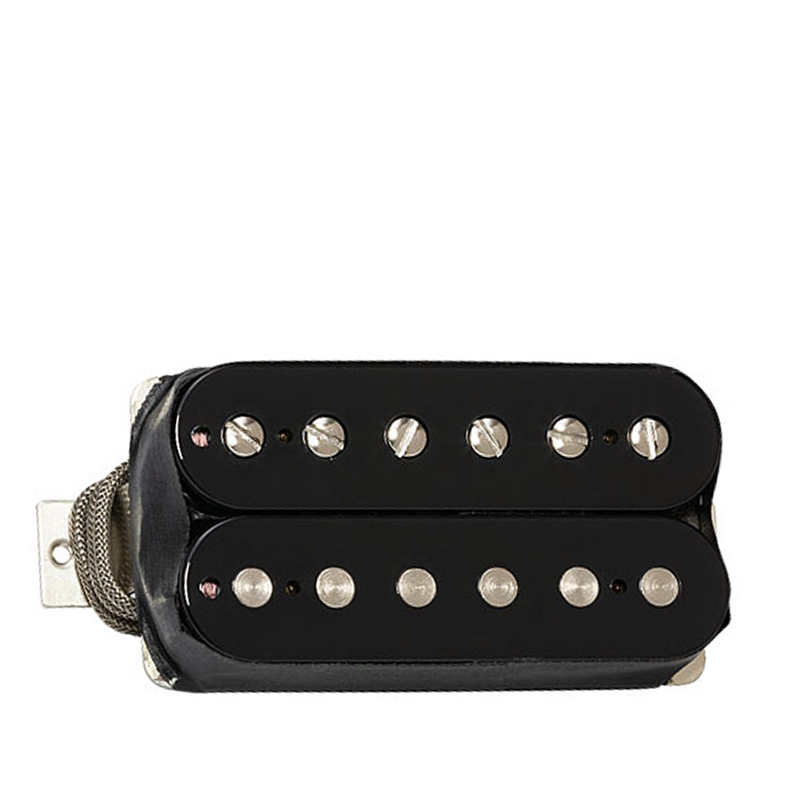
The Custombucker is fitted in some of Gibson’s most premium Custom Shop guitars and features Alnico III magnets and 42 AWG gauge for an authentically PAF vintage voicing.
Single coil recommendations
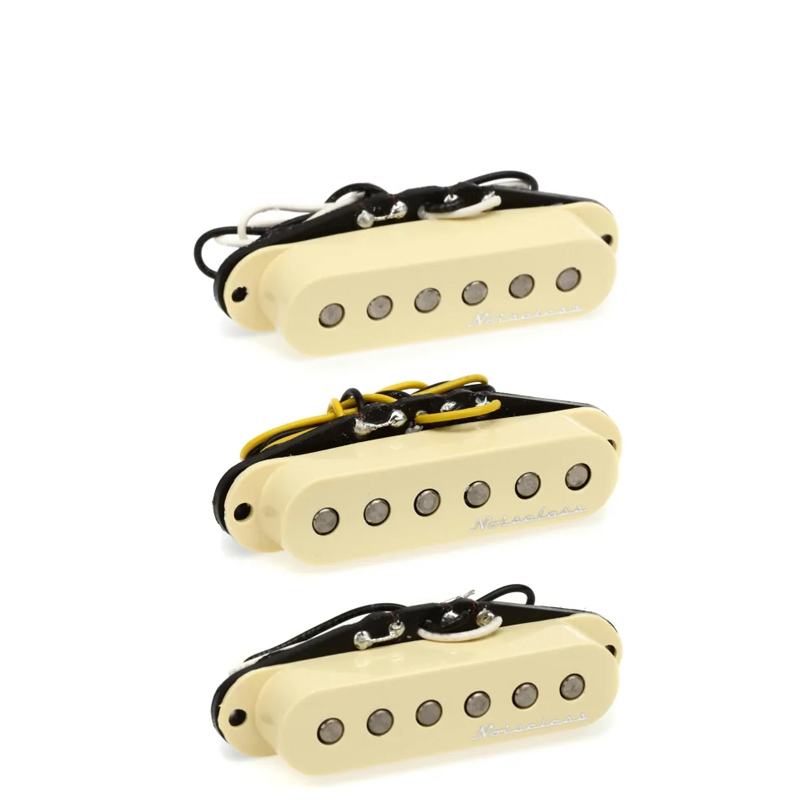
The Hot Stratocaster pickups are overwound and feature ceramic magnets for a punchier bite and a smooth bass response - and better yet, they are noiseless!
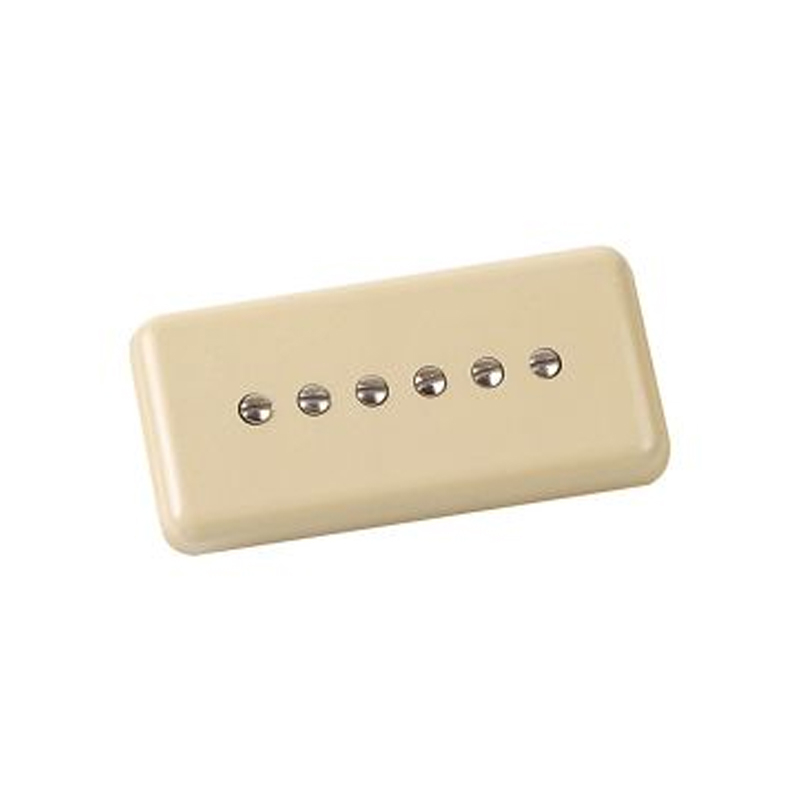
Fatter than a typical single coil, the P90 is ideal for those who want a fuller, more rounded tone, but don't want to go full humbucker. If this sounds like the tone you're after, then you can't go wrong with this classic example from Gibson.
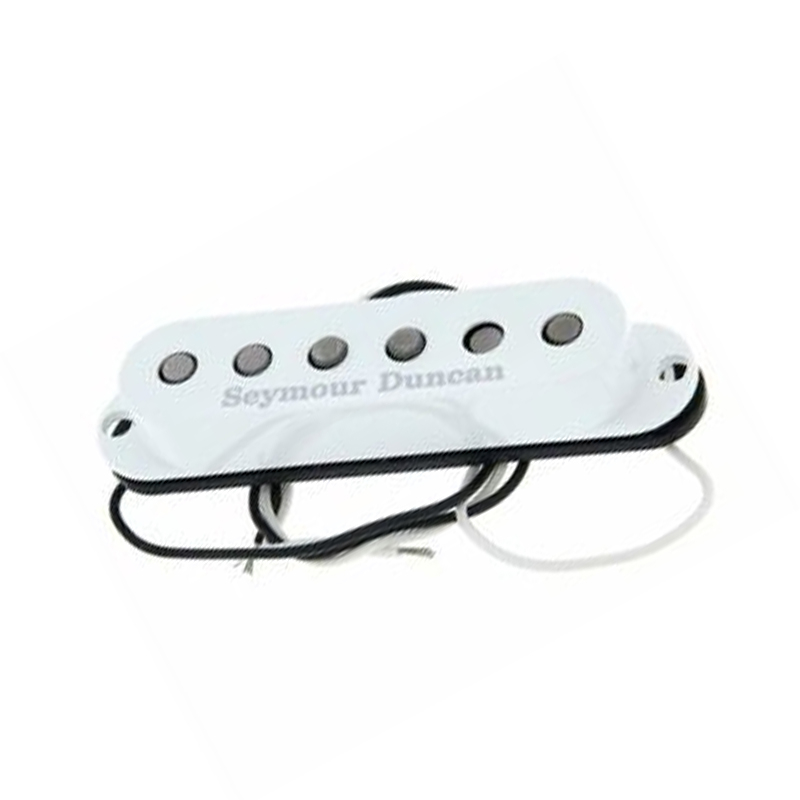
The SSL-5 is an overwound single coil pickup and as a result, has much more output than a standard Fender single coil. This helps Gilmour achieve beautiful note sustain and some extra zip when he needs it during his many virtuosic solos.

Matt is a Junior Deals Writer here at Guitar World. He regularly tests and reviews music gear with a focus on guitars, amps, pedals, modelers, and pretty much anything else guitar-related. Matt worked in music retail for 5 years at Dawsons Music and Northwest Guitars and has written for various music sites including MusicRadar, Guitar Player, Guitar.com, Ultimate Guitar, and Thomann’s t.blog. A regularly gigging guitarist with over 20 years of experience playing live and writing and recording in bands, he's performed everything from jazz to djent, gigging all over the country in more dingy venues than you can shake a drop-tuned guitar at.
“Classic aesthetics with cutting-edge technology”: Are Seymour Duncan's new Jazzmaster Silencers the ultimate Jazzmaster pickups?
“We’re all looking for new inspiration. Some of us have been playing humbuckers for a long, long time”: Are we witnessing a P-90 renaissance? Warren Haynes has his say










